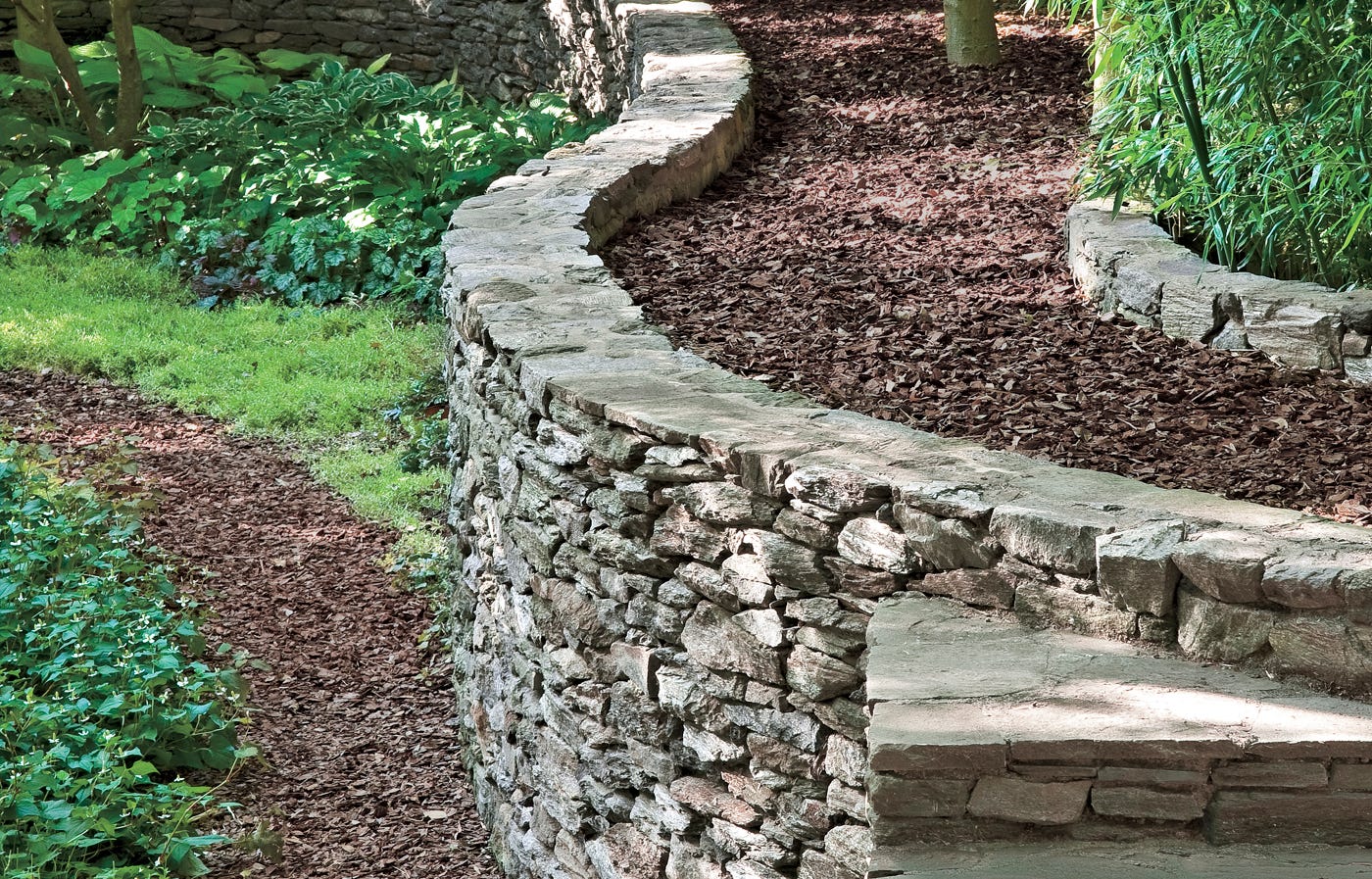Some Of Retaining Wall
Table of ContentsThe Ultimate Guide To Retaining Wall9 Simple Techniques For Retaining WallThe Of Retaining WallSome Of Retaining WallThe Basic Principles Of Retaining Wall

A maintaining wall surface that retains soil on the backside as well as water on the frontside is called a seawall or a bulkhead. A wall surface for keeping in place a mass of planet or such, as at the edge of a terrace or excavation. A preserving wall surface is a framework created and also built to stand up to the lateral stress of dirt, when there is a wanted modification in ground altitude that goes beyond the angle of repose of the soil.
Yet the term typically describes a cantilever keeping wall surface, which is a free standing framework without lateral support at its top - Retaining Wall. These are cantilevered from a ground and rise over the quality on one side to retain a higher degree quality on the opposite side. The walls need to withstand the lateral stress generated by loosened dirts or, in some instances, water pressures.
The smart Trick of Retaining Wall That Nobody is Talking About
The wedge is specified as the soil which extends past the failure airplane of the dirt type existing at the wall website, and can be computed as soon as the dirt friction angle is understood. As the setback of the wall surface increases, the size of the sliding wedge is reduced. This reduction decreases the pressure on the maintaining wall surface.
(phi) and the natural stamina (c) of the maintained product, as well as the direction and also magnitude of movement the keeping structure goes through. Side planet pressures are no at the top of the wall as well as in homogeneous ground increase proportionally to a maximum value at the cheapest deepness.

Diaphragm walls are pricey wall surfaces, however they conserve time as well as space, and hence are used in urban constructions. Sheet heap maintaining walls are generally used in soft soil and also limited areas.
For a fast quote the material is typically driven 1/3 above ground, 2/3 listed below ground, yet this might be changed relying on the environment. Taller sheet stack wall surfaces will certainly need a tie-back support, or "dead-man" placed in the dirt a range behind the face of the wall, that is tied to the wall, generally by a cable television or a pole.
How Retaining Wall can Save You Time, Stress, and Money.
An anchored preserving wall surface can be created in any one of the aforementioned styles however also includes extra toughness using cords or other keeps secured in the rock or soil behind it. Generally driven right into the material with boring, anchors are after that increased at the end of the cable, either by mechanical methods or commonly by infusing pressurized concrete, which increases to develop a light bulb in the dirt.
A variety of systems exist that do not be composed of just the wall surface, however reduce the planet pressure acting directly on the wall surface. These are usually used in combination with among the other wall kinds, though some might only use it as encountering, i. e., for aesthetic purposes. Rocks of retaining wall surface used in avoiding dirt run-off in dale This type of soil fortifying, usually additionally utilized without an outdoors wall surface, contains cord mesh "boxes", which are loaded with approximately cut stone or various other material.
This type of soil strengthening typically requires outer dealing with wall surfaces (S.R.W.'s Segmental Retaining Walls) to attach the layers to and vice versa. The wall surface face is often of precast concrete systems that can tolerate some differential movement.
Getting My Retaining Wall To Work
Gravity walls usually need to be a minimum of 50 to 60 percent as deep or thick as the height of the wall surface, and might need to be larger if there is an incline or surcharge on the wall. Mobile arrest systems (geocells) are likewise made use of for high earth stablizing in gravity and also strengthened retaining wall surfaces with geogrids.
A maintaining wall surface, briefly placed, is a wall surface that holds back dirt. It's a simple concept, to make sure, yet don't allow its simpleness fool you. Keeping wall surfaces are actually quite innovative pieces of design. And also they have actually been used given that ancient times to his comment is here boost the efficiency, efficiency as well as aesthetic appeals of several types of residential or commercial property.